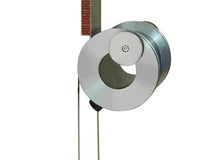Bend testing measures the ductility of materials. Bending tests may involve taking the sample material to a specific limit and determining the load measurement and its relationship to a load specification (pass/fail). This is known as a non-destructive test. Or, it may involve bending a material until the material experiences a break and determining both the load and deflection required to initiative the break limit. This is known as a destructive test.
Two types of bending tests are generally used to determine flexural stress and flexural strain, the 3 point bend and 4 point bend. The materials that are tested using the flex test method vary from metal, plastic, wood, laminates, particle board, dry wall, ceramic tile, to glass. Bending tests vary greatly based on the product being tested.
The 3 point flexure fixture produces its peak stress at the specimen mid-point with reduced stress elsewhere. This localization of stress is ideal for testing for specific isolation of stress on a component or material.
Four-point bending is used effectively to measure the bond strength. In four-point bending a uniform maximum moment and an area of tension at the bottom of the specimen is achieved. A 4 point flexure fixture produces peak stresses along an extended region of the specimen hence exposing a larger length of the specimen with more potential for defects and flaws to be highlighted.
TEST STANDARDS:
• ASTM C393 - Flexural Properties of Sandwich Constructions
• ASTM C1161 - Flexural Strength of Advanced Ceramics at Ambient Temperature
• ASTM D648 - Deflection temperature of plastics under flexural load
• ASTM D790 - Flexural Properties of Un-reinforced and Reinforced Plastics and Electrical Insulating Materials







